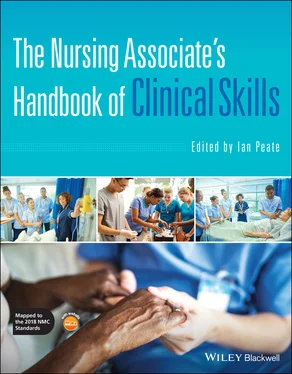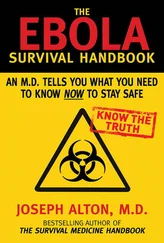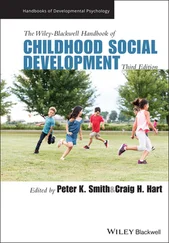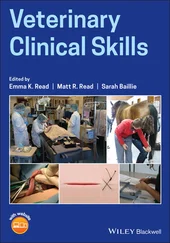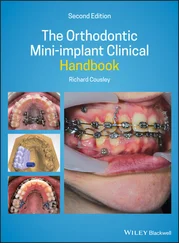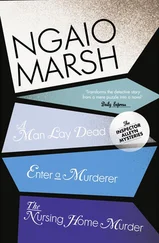The Nursing Associate's Handbook of Clinical Skills
Здесь есть возможность читать онлайн «The Nursing Associate's Handbook of Clinical Skills» — ознакомительный отрывок электронной книги совершенно бесплатно, а после прочтения отрывка купить полную версию. В некоторых случаях можно слушать аудио, скачать через торрент в формате fb2 и присутствует краткое содержание. Жанр: unrecognised, на английском языке. Описание произведения, (предисловие) а так же отзывы посетителей доступны на портале библиотеки ЛибКат.
- Название:The Nursing Associate's Handbook of Clinical Skills
- Автор:
- Жанр:
- Год:неизвестен
- ISBN:нет данных
- Рейтинг книги:4 / 5. Голосов: 1
-
Избранное:Добавить в избранное
- Отзывы:
-
Ваша оценка:
- 80
- 1
- 2
- 3
- 4
- 5
The Nursing Associate's Handbook of Clinical Skills: краткое содержание, описание и аннотация
Предлагаем к чтению аннотацию, описание, краткое содержание или предисловие (зависит от того, что написал сам автор книги «The Nursing Associate's Handbook of Clinical Skills»). Если вы не нашли необходимую информацию о книге — напишите в комментариях, мы постараемся отыскать её.
The Nursing Associate’s Handbook of Clinical Skills
The Nursing Associate’s Handbook of Clinical Skills
The Nursing Associate's Handbook of Clinical Skills — читать онлайн ознакомительный отрывок
Ниже представлен текст книги, разбитый по страницам. Система сохранения места последней прочитанной страницы, позволяет с удобством читать онлайн бесплатно книгу «The Nursing Associate's Handbook of Clinical Skills», без необходимости каждый раз заново искать на чём Вы остановились. Поставьте закладку, и сможете в любой момент перейти на страницу, на которой закончили чтение.
Интервал:
Закладка:
Empirical knowing
Empirical knowledge is gained from research and objective facts. This knowledge is systematically organised into general laws and theories. This way of knowing is often referred to as the science of nursing.
Ethical knowing
This way of knowing helps develop our own moral code and our sense of knowing what is right and wrong. Nursing associates’ personal ethics are based on their obligation to protect and respect human life.
Aesthetic knowing
Aesthetic knowing makes nursing an art. All the other ways of knowing are considered and through it aesthetic knowing.
Source : Based on Carper (1978)
Interestingly, Munhall (1993, cited in Stevens 2018) identified ‘unknowing’ as a further component of knowing, suggesting this is an awareness that the nurse does not and cannot know or understand of the patient when they initially meet. The skill of recognising this unknowing ensures that the nursing associate remains alert to the patients’ perception of need. This echoes Mayer & Salovey’s (1997) theoretical framework of emotional intelligence, where on initial meeting with the patient, the nurse perceives the situation by tuning in to his/her own self and emotional awareness and that of the patient in order to gauge the need of the situation. Part of this awareness is sometimes referred to as intuitive or tacit knowledge, just knowing and understanding common thoughts. Such knowledge adds to the gathering of information in the development of the therapeutic nurse–patient relationship.
Take Note
 You never get another chance to make a first impression; a bad first impression is hard to change. Patients feel more relaxed and communicate more freely with someone they feel is professional.
You never get another chance to make a first impression; a bad first impression is hard to change. Patients feel more relaxed and communicate more freely with someone they feel is professional.
To summarise these theories (Carper 1978; Watson 1985; Swanson 1991; Johns 2000), it is evident that the concept of knowing emerges from a deep and meaningful relationship between the nurse and the patient. Through the delivery of care, the nursing associate continuously strives to understand and interpret the needs of the patient. The ability to gather relevant information and use a variety of sources demonstrates a strong conceptual foundation of the meaning of knowing; however, it should be acknowledged that the level of information gathered will depend on the nursing associates’ previous clinical experiences and interactions.
Violet Flag
 Understanding and integrating the needs of patients is key to the provision of safe, high‐quality care. Gathering information occurs in many ways and in many venues.
Understanding and integrating the needs of patients is key to the provision of safe, high‐quality care. Gathering information occurs in many ways and in many venues.
Health screening in the prison service occurs upon reception into custody and provides an ideal opportunity to detect and treat previously unmet healthcare needs. When assessment during reception is effective, this has real potential to identify health problems, especially serious mental illness.
Emotional Intelligence
Emotional intelligence is defined as the ‘ability to recognise the meaning of emotions and their relationships and to use them as a basis of reasoning and problem‐solving’ (Mayer et al. 2001, p. 234).
Mayer & Salovey (1997) believed that emotional intelligence is related to thinking, through the ability to use reasoning, by way of information, to find meaning. This model is composed of four branches (see Table 6.1). Each branch has specific characteristics to meet the criteria of emotional intelligence. Each level or branch builds upon the previous one, and awareness of what each branch offers is individual. Enhancing relationships with others is a key component of healthy emotional interactions. The following is a brief description of the four branches. The first branch is the perception of emotion, which is the skill of accurately distinguishing emotion within oneself and others. Using emotion to facilitate thinking is the second branch. This branch enhances an individual’s ability to assimilate emotion to facilitate thinking and to prioritise thinking and judgements.
Understanding emotion follows as the third branch, which allows application of the emotional knowledge gained in the first two levels of skills to translate emotions to meaning within the context of events. The highest level of the skills of emotional intelligence is the conscious regulation and management of emotion. This level of the model allows the nursing associate to remain receptive to emotional information while reflecting on the usefulness of it. This reflective skill provides the ability to evaluate emotional reactions not only within self but also those conveyed by others.
Touch Point
Emotional intelligence can be described as the ability to monitor or control own emotions, as well to the emotions of those around you. This involves recognising feelings, self‐awareness, how emotions affect relationships and also how this can be managed.
Table 6.1 Branches and characteristics of emotional intelligence theoretical framework.
Source : Based on Mayer & Salovey (1997).
| BRANCH 1 | BRANCH 2 | BRANCH 3 | BRANCH 4 |
|---|---|---|---|
| Perceiving emotions (PE) | Facilitating thought with emotions (FE) | Understanding emotions (UE) | Managing emotions (ME) |
| Characteristics | Characteristics | Characteristics | Characteristics |
| Self‐awarenessEmotional self‐awarenessAccurate self‐assessmentSelf‐confidenceGauging the moodTuning into your sense | Emotional self‐controlCognitive process – comprehension of language, learning, reasoning, problem‐solving, decision‐makingIntuitionInitiativeAdaptabilityConscientiousnessTrustworthiness | EmpathyRecognitionClinical reasoningCritical thinkingClinical judgement | CommunicationWorking as a team – working towards similar goalsNurturing relationships – buildings rapportChange agentLeadershipDeveloping self and others – personal growthInfluencesConflicts |
Eraut (2000) purposes two distinct elements of knowledge from which information is gathered; knowledge embedded in routines and protocols and knowledge that is explicitly needed at the time – intuition. Such knowledge may influence how the patient is assessed, what decisions are made and/or how the nursing associate interacts with the patient. Intuition is often proposed as one of the defining characteristics of expertise and has been the topic of considerable debate. Some believe that it does not exist (English 1993, cited in den Hertog & Niessen 2019), while others advocate intuition in nursing as a genuine phenomenon (Benner 1984).
Intuition is characterised has ‘having a gut feeling’ about something which might impress ‘a bystander of the suddenness and nearly magical nature of these behaviours’ (Gobet & Chassy 2008, p. 130). In general, intuition involves a rapid perception, lack of awareness of the process engaged, associated presence of emotions and holistic understanding of the problem situation (Benner 1984; Gobet & Chassy 2008). Mayer & Salovey (1997) proposed that some individuals possess greater ability than others to reason about and use emotionally intense information to enhance both cognitive activity and social functioning.
Our ability to perceive, process and manage emotional information varies greatly. Nursing is an emotionally demanding healthcare practice, and nursing associates need to understand their own emotions and perceptions in order to understand a patient’s needs and hence develop a therapeutic relationship; by using our emotions, judgements are formed, and decisions are acted upon (James et al. 2010).
Читать дальшеИнтервал:
Закладка:
Похожие книги на «The Nursing Associate's Handbook of Clinical Skills»
Представляем Вашему вниманию похожие книги на «The Nursing Associate's Handbook of Clinical Skills» списком для выбора. Мы отобрали схожую по названию и смыслу литературу в надежде предоставить читателям больше вариантов отыскать новые, интересные, ещё непрочитанные произведения.
Обсуждение, отзывы о книге «The Nursing Associate's Handbook of Clinical Skills» и просто собственные мнения читателей. Оставьте ваши комментарии, напишите, что Вы думаете о произведении, его смысле или главных героях. Укажите что конкретно понравилось, а что нет, и почему Вы так считаете.
